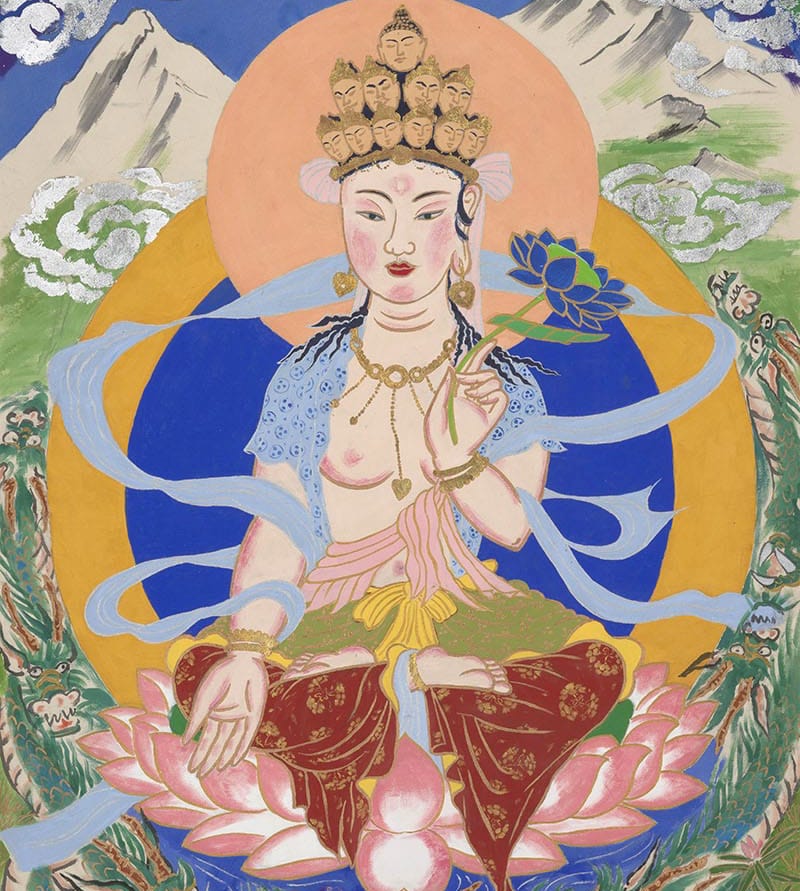Recalling the vast bodhisattva assemblies that manifest when the Buddha teaches the dharma, Sarasvati’s Gift: The Art and Life of a Modern Buddhist Revolutionary, a new show at New York City’s Tibet House, draws forth the sacred feminine forces of heaven and Earth to bear testament to artist and activist Mayumi Oda’s transcendent vision. Devas, bodhisattvas, saints, mountain spirits, immortal sages, wrathful deities engulfed in flames, meditating skeletons, cherubim, nursing chubby babies, and a menagerie of animals and mythical creatures dominate the gallery space in monumental paintings from the artist’s career, flooding the eye with both the glorious and grotesque.
Oda’s bold, controlled line work against her loose, ecstatic use of color breathes life into her subjects and reveals the structure of nature within the transient chaos of existence. Tibet House Managing Director Beata Tikos says that being around the artist’s work on a daily basis is a reminder of our human condition: impermanence. This central Buddhist teaching is further elucidated in the inspirational story of Oda’s life, which she wrote about in an autobiography also titled Sarasvati’s Gift.
Get a taste of the exhibit below and learn more about Oda at Tibet House, where this homage to her creative energy is on display until February 10, 2023. This Buddhist trailblazer beckons us to dance around her sacred fire and be set alight by her expressions of female power and beauty.
***
A Selection of Paintings from Sarasvati’s Gift: The Art & Life of a Modern Buddhist Revolutionary
(Art and captions by the artist)
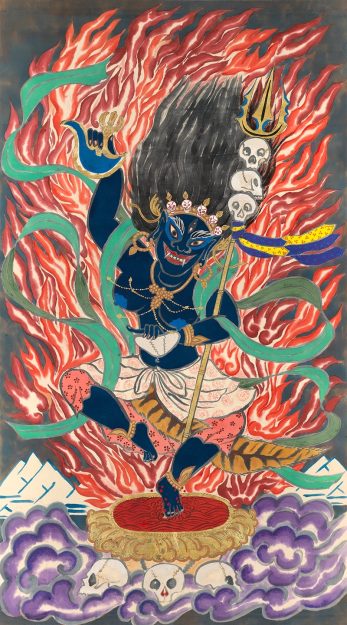
“Dakini teachings talk about the need to reflect on our own mind, which is the mysterious home of the dakinis. By understanding this deep interconnectedness, you become a skywalker in this universe; in both heaven and earth, you have the freedom to walk through, unimpeded.”
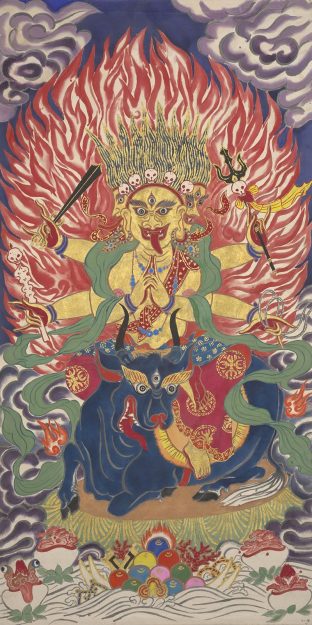
“For the fiftieth anniversary of the tragic events at Hiroshima and Naga-saki, I painted this representation of the goddess of the hell realm, Lady Yamantaka, praying while sitting on a black bull.”
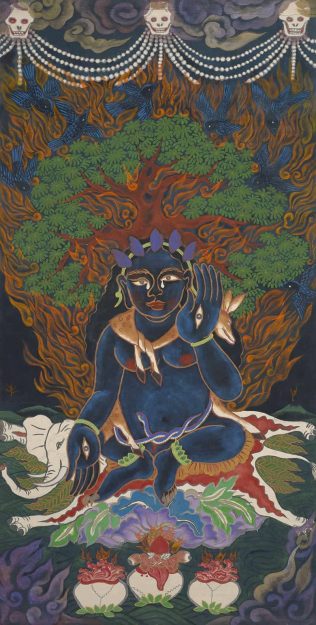
“Before I left for the peace conference at The Hague in 1999, I gathered with four other women in a Hawaiian cave. We walked through a lava tube shaped like a birth canal that opened into a wide fat area, where we sat in a circle in the pitch-darkness.”
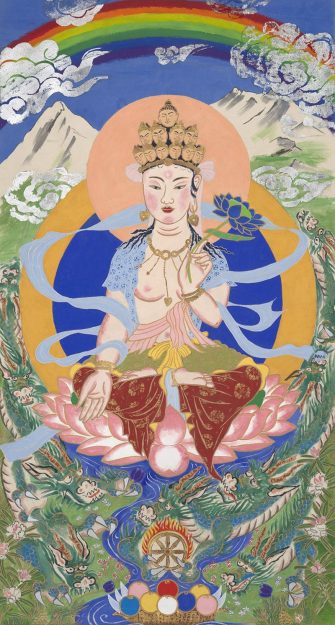
“The Kukuri Goddess of Hakusan probably originated in Korea, when the country was called Kokkurius, and was subsequently brought to Japan. The word kukri means “tied together,” like a connection between two places–this world and the spirit world.”
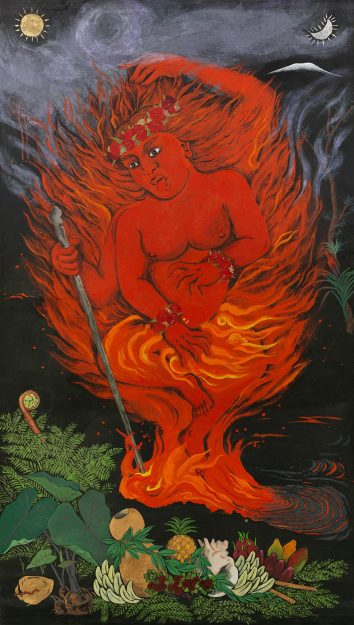
“Pele, Goddess Creation and Destruction, of volcanoes and fire and the creator of the Hawaiian Islands, appears here as an angry four-armed Dakini. Fitting for this time in the world, Pele reminds us of the impermanence of life and the importance of focusing on the Eternal.”
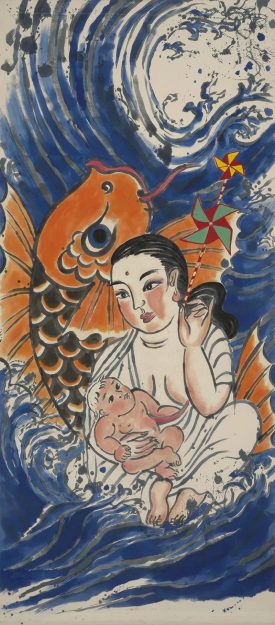
“My beautiful mother resembled Quan Yin. She was a big, ample woman with fair skin, thick black hair, unusually big eyes, and a beautifully shaped nose. In a quiet ocean, Quan Yin appears inside the full moon, in front of us.”
Thank you for subscribing to Tricycle! As a nonprofit, we depend on readers like you to keep Buddhist teachings and practices widely available.
